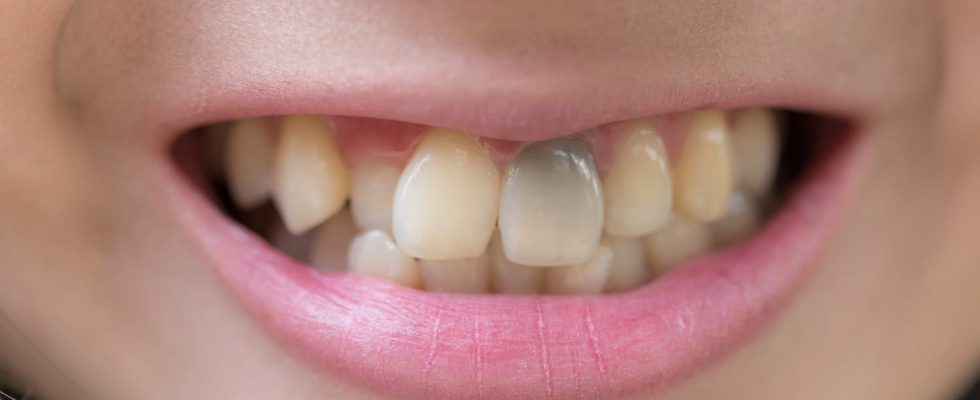Brown or maroon stains on the teeth can be unsightly but usually not serious. Cigarette, coffee, tooth decay… List of 8 possible causes in adults, children (milk teeth) or babies.
You have noticed small brown spots on your teeth ? It’s quite common. As the tooth enamel is slightly porous, there are constant exchanges with the salivary medium. Dental stains are essentially linked to the lifestyle of each individual. Tobacco, tea, coffee, mouthwash, tooth decay… Tour of possible causes and solutions to get rid of stains on teeth.
1. Coffee or tea
Coffee or tea are beverages that contain tanninspolyphenols which have an action on the lasting stabilization of the color and therefore which can stain the surface of the teeth.
2. Smoking
Tobacco is one of the primary causes of brown stains on the teeth. Composed of tar and nicotine, its chemicals cause spots of yellow or even black color, and can even attack the enamel. Tobacco is also responsible for the development of tartar, and therefore the formation of cavities.
3. Too much fluoride
Marbled spots may indicate fluorosis, a condition caused by an excess of fluoride due to excessively fluoridated water, fluoridated salt in food, fluoridated tablets or in very high doses a toothpaste too high in fluoride. Note that some black stains may be related to an iron supplement or shock or if the teeth are damaged after a fall.
4. A deep cavity
In some cases, the brown staining is localized to a single tooth. The enamel and dentin are discolored meaning that the involvement is deeper, often due to a pulp necrosis (advanced tooth decay).
5. Certain mouthwashes
Chlorhexidine mouthwashes have the side effect of staining the teeth because this substance tends to stick to the hard and soft tissues of the tooth. It should therefore be used on a short time and to avoid drinking coffee, tea or red wine for the duration of treatment. It is also to be avoided if you have dental crowns or caps made of composite or glass ionomer.
6. Taking antibiotics
Amoxicillin is a penicillin antibiotic that is widely used to treat many infections. It can cause in very rare cases (< 1/10,000) a mostly yellowish color may affect the entire dentition after several days of treatment. This dyschromia may persist after stopping treatment and require the use of dental care because simple brushing is ineffective.
7. Poorly crystallized enamel (milk teeth in children)
External white, yellowish or brown spots can appear on children’s baby teeth randomly and unpredictably. This rather rare phenomenon corresponds to a “hypocalcification” of tooth enamel, that is to say a defect in crystallization of the enamel. Stains can affect one or all of the teeth, both anterior and posterior teeth. The resulting enamel is less transparent, chalky, porous and stains easily.
8. Poor brushing (in babies)
The staining of babies’ teeth can be due to an accumulation of dental plaque on the surface of the teeth which stains due to insufficient toothbrushing, even if these stains are not necessarily a sign of the presence of cavities.
If the cause of the dental dyschromia is extrinsic, it is initially necessary to limit the consumption of the product or products in question, in particular tobacco and coffee. Then, the dentist can offer a whitening treatment:
► Outpatient treatment by means of a gutter tailor-made in which the lightening product is ready to be worn for several hours each day. This treatment lasts 8 to 15 days depending on the concentration of the lightening product.
► A treatment at the dentist’s office which consists of apply a lightening product very rich in hydrogen peroxide on the teeth for about an hour.
► A mixed treatment that partly combines outpatient treatment and in-office treatment.
► In the event of intrinsic dental dyschromia, the cause must be sought and treated as far as possible: decay, medication, etc.
► Before starting any home whitening treatmentit is best to consult your dentist to determine the cause(s) of your spots and find the appropriate treatment.
